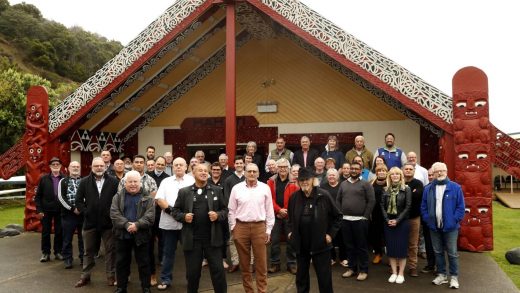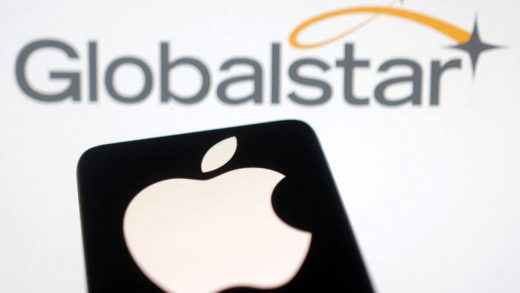:format(webp)/https://www.thestar.com/content/dam/thestar/entertainment/opinion/2023/03/03/power-and-palate-alex-prudhommes-new-book-dinner-with-the-president-serves-up-diplomacy-with-a-side-of-american-food-history/richard_nixon_eating_with_chopsticks_in_china_1972.jpg)
It was one of the biggest geopolitical coups of the 20th century and the first diplomatic mission of a sitting U.S. president to be transmitted live on TV.
Cut to … Richard Nixon spending weeks in 1972 boning up not only on Chinese culture, but also doing a crash course on chopsticks. “He practised and he practised, using different chopsticks with cashew nuts,” Alex Prud’homme was telling me this week. “Even marbles!”
Much was at stake, after all, as the author expounds in his dishy new book “Dinner With the President: Food, Politics, and a History of Breaking Bread at the White House.” With China having remained effectively closed for years and relations with America frozen, and this trip portending a breakthrough — plus, the reality that “banquets play an outsize role in Chinese culture” — Nixon’s “ability to use chopsticks could seal a deal with the Middle Kingdom.”
Long story short: the 37th American president killed it, particularly during a seismic dinner held for 600 in the Great Hall of the People at Tiananmen Square, all eyes on the famously taciturn Nixon, child of Quakers. Handling it all with aplomb — including the shark’s fin — he gave one of those picture-worth-a-thousand-word moments, the mission not only burnishing his own campaign for re-election that year (he was re-elected to a term cut short when he resigned over Watergate), but also making Chinese food all the rage back home.
“There was an absolute ripple effect,” Prud’homme says now. While Chinese cuisine had been around for a while on the continent, it created a new vogue, especially for more regional Chinese fare and a departure from bland chop suey. The irony being, of course, that it happened thanks to a man who had a timorous stomach, despised long state dinners and “had a ball of cottage cheese for lunch every single day.”
Just some of the many disclosures in “Dinner With the President,” which takes a non-pedantic flight through the American presidency through the lens of food, touching on everything from global trade, science, religion, class and the marriages of first couples. Food as fuel and food as pleasure. Power and palate. Lusty appetites and managed expectations.
“I became fascinated in how presidential menus evolved from George Washington. And even though a president is his own person, with his own quirks, how he reflects the state of the union,” Prud’homme further explains, on the horn from New York. An interest fanned also, undoubtedly, by his famous chef great-aunt, the one and only Julia Child, with whom he was close (they famously co-authored her mesmerizing memoir, “My Life in France”). Years before — in a kind of foreshadowing — Child went to the White House to host the first ever televised state dinner between then-president Lyndon B. Johnson and the visiting Japanese prime minister, Eisaku Sato.
“Nothing is more political than food. Nothing,” is what the great Anthony Bourdain once posited — a quote that graces the beginning pages of “Dinner With the President” and which Prud’homme quickly seeks to do justice.
Some of the gastro lore here is amusing and some of it downright history-altering: Calvin Coolidge, for instance, who kept a chicken coop at the White House (like a yummy mummy hipster of our time!) and whose chickens had a minty taste (because the coop was built on top of a former president’s mint garden) vs. the so-called “Hot Dog Summit” when Franklin and Eleanor Roosevelt invited King George VI and his wife, Elizabeth, to their upstate New York country pile known as Hyde Park in 1938.
“They call that the Picnic That Won the War,” Prud’homme enthuses, explaining how America was in an isolationist funk then, resenting the Brits after the First World War but that Roosevelt, fearing the rise of fascism, knew he could boost support with some stagecraft with the royals (until then, no British monarch had ever set foot on American soil).
Seeking to present them in an atmosphere of relaxed pomp and concurrently woo the press, the Roosevelts did give the Windsors hot dogs — on paper plates! The newspapers did, indeed, go mad and the King, for that matter, enjoyed his so much, he had a second. Behind the scenes, there was talk of weightier affairs, of course. Three months later, Germany invaded Poland and the U.S. began shipping supplies to Europe in 1940. Relations had thawed. Lines: drawn.
Food as personal branding. Food as Rorschach test. All on the menu, here. The Carters, for instance, who brought Southern hospitality (grits!) to the White House and whose image was formed by the fact that Jimmy was a peanut farmer. George W. Bush, who choked on a pretzel in public once (but also, interestingly, is the president who hired the first female chef at the White House, a Filipino-American at that!). Consider: Dolley Madison, wife of the fourth president, who essentially defined the role of first lady, using social opportunities to leverage relationships and curry favours and then, decades later, the singular Jackie Kennedy, who seemingly modelled her White House soirées on the template of Louis XIV (the Sun King, who used haute cuisine as diplomacy).
The heaviest president in history was William Howard Taft, who topped out at 350 pounds and was often dieting (snacking on prunes, among other things). The best presidential cook, surprisingly? The buttoned-up President Dwight D. Eisenhower, who had learned to cook as a kid. The most epicurean of presidents? Thomas Jefferson, who had spent a lot of time in Paris.
One had-to-be-there state dinner was that eve in 1994 when the Clintons hosted Nelson Mandela, newly elected as the president of South Africa. Sautéed halibut with a wasabi-sesame crust in a carrot juice broth: on the menu. Whitney Houston was in the house and at the mike.
Ketchup is a recurring leitmotif in the book — a condiment for the ages, apparently, and never more terrifyingly than when Donald Trump, in a fit of rage at his attorney general, Bill Barr, threw his lunch in the dining room. “There was ketchup dripping down the wall,” as his former aide Cassidy Hutchinson famously testified during the Jan. 6 commission hearings.
There were many more places for Prud’homme and I to go — and we did — but we ultimately ended on the subject of jelly beans.
Why not, right? Ronald Reagan was obsessed with them, having first used them to wean himself off tobacco but then using them as a signature accessory. The candy effectively helped to craft an image of him as this folksy, fun guy, and his faves were made by the Herman Goelitz Candy Company (which doubled its sales because of the hype then). The White House itself had a standing order of 720 bags of jelly beans because Reagan got to handing them out and at his inauguration, in 1981, 40 million were consumed.
Ronnie apparently believed you could tell a lot about someone’s character by their jelly bean picks: whether they choose all one colour or a medley. And when he died in 2004, Prud’homme finally told me, people left jelly beans at Reagan’s grave.
JOIN THE CONVERSATION
does not endorse these opinions.



